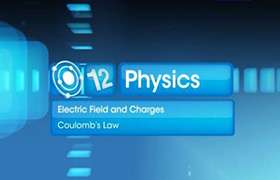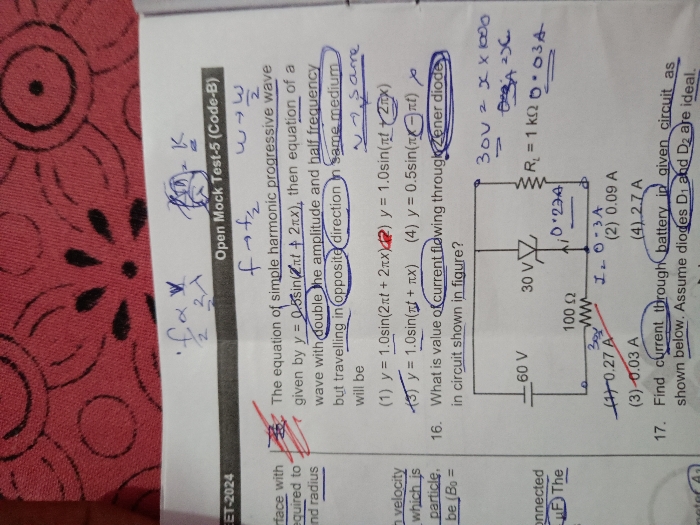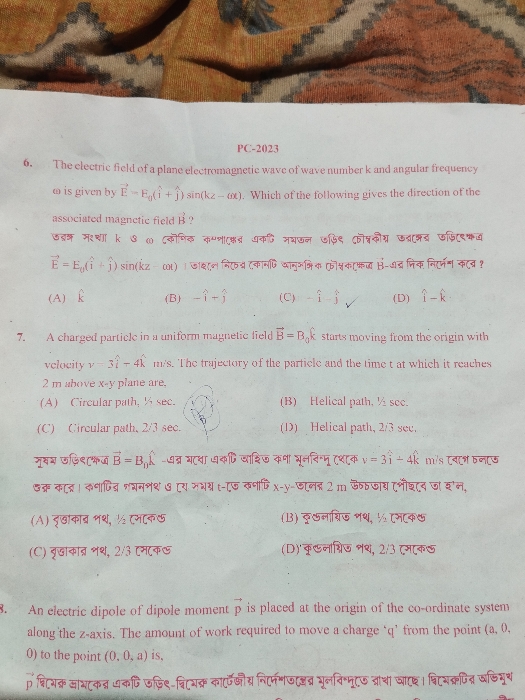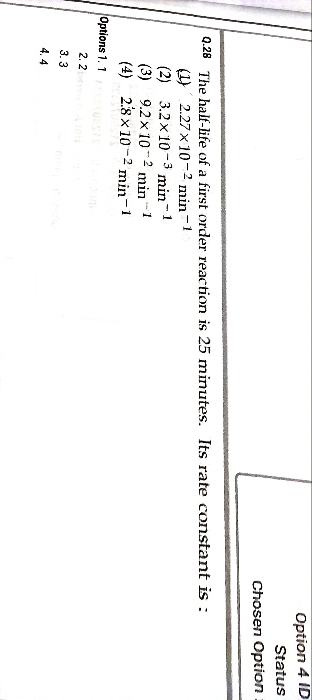CBSE Class 12-science Answered
Q - 19
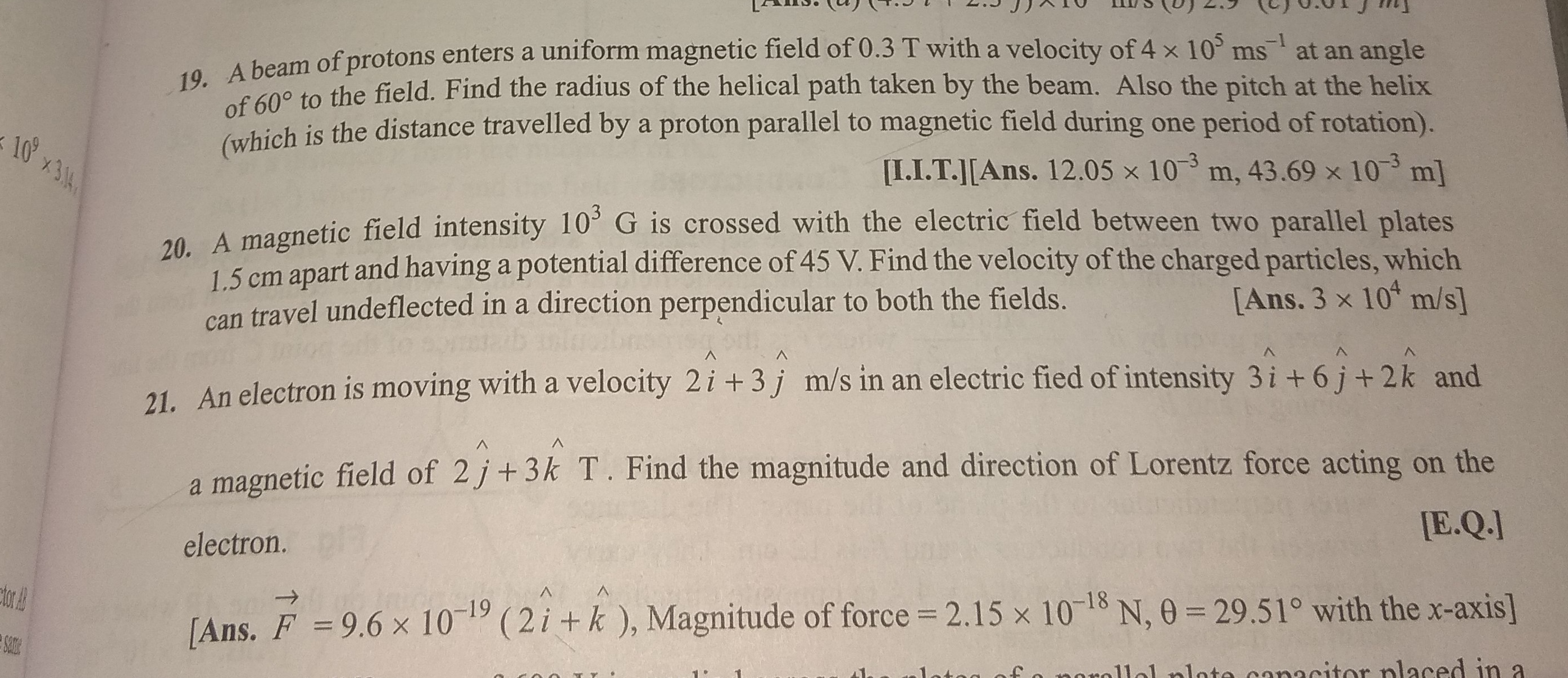
Asked by majethiyarishat9566.12sdatl | 24 Oct, 2020, 02:20: PM
if proton enters in magnetic field at an angle 60o with respect to magnetic field direction and velocity magnitude of proton is v ,
then resolved componet of velocity ( v sin60) perpendicular to magnetic field direction makes the proton in circular path whereas
the parallel component ( v cos60) makes the proton to move along the magnetic field direction resulting a helical path for proton.
Radius R of circular path is obtained from , ( m v2 sin260) / R = ( q B v sin60 ) or R = ( m v sin60) / ( q B )
where m = mass of proton, q is charge of proton and B is magnetic field induction
Hence Radius of circular path , R = ( 1.673 × 10-27 × 4 × 105 × 0.866 ) / ( 1.602 × 10-19 × 0.3 )
R = 12.06 × 10-3 m = 12.06 mm
Period of revolution T = ( 2π R ) / ( v sin60 )
In one period of revolution, proton moves a distance d along the magnetic field direction as ,
d = vcos60 × T = ( 2π R ) / ( tan60 ) = ( 2π × 12.06 × 10-3 ) / tan60 = 43.75 × 10-3 m = 43.75 mm
Radius R of helical path = 12.06 mm
Pitch d of helical path = 43.75 mm
Answered by Thiyagarajan K | 24 Oct, 2020, 05:45: PM
Concept Videos
CBSE 12-science - Physics
Asked by artabandhusahu85 | 24 Apr, 2024, 12:07: PM
CBSE 12-science - Physics
Asked by niharvijayvargiya5 | 23 Apr, 2024, 06:40: PM
CBSE 12-science - Physics
Asked by kulhariabhijeet | 21 Apr, 2024, 02:39: PM
CBSE 12-science - Physics
Asked by mohapatraswetalina88 | 21 Apr, 2024, 12:18: PM
CBSE 12-science - Physics
Asked by aishaisha091098 | 19 Apr, 2024, 04:54: PM
CBSE 12-science - Physics
Asked by dasrituparna1999 | 13 Apr, 2024, 06:56: AM
CBSE 12-science - Physics
Asked by dasrituparna1999 | 12 Apr, 2024, 09:26: PM
CBSE 12-science - Physics
Asked by mishrigupta19319 | 08 Apr, 2024, 06:28: PM
CBSE 12-science - Physics
Asked by madhav9119887644 | 07 Apr, 2024, 08:10: PM



